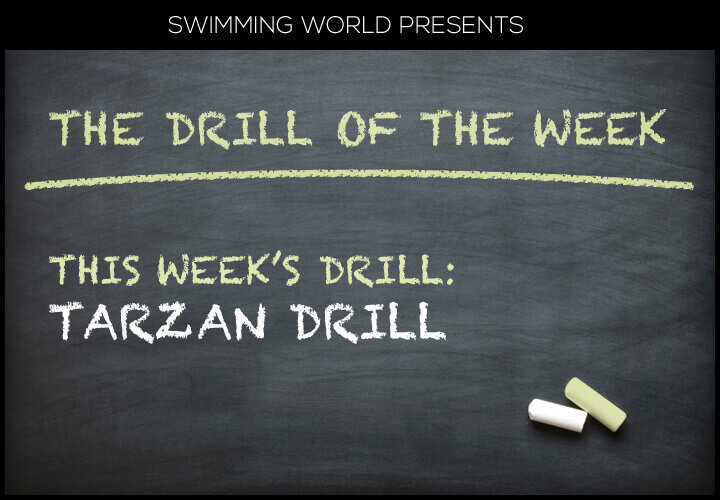Swim Drill Of The Week: Tarzan Drill

Welcome to the “Swim Drill of the Week”. Swimming World will be bringing you a drill, concept, or tip that you can implement with your team on a regular basis. While certain weeks may be more appropriate for specific levels of swimming (club, high school, college, or masters), Drill Of The Week excerpts are meant to be flexible for your needs and inclusive for all levels of swimming.
This week’s drill is Tarzan Drill, often simply known as heads up freestyle. This is a great drill for sprinters to develop body awareness and core control while maintaining a high tempo stroke.
To perform the drill, swimmers will swim freestyle down the length of the pool with their heads out of the water looking straight down to the other end. This puts their body in a naturally unstable position with their hips low and feet likely dragging behind them. Coaches stress head position and body alignment constantly, so it may seem odd to put your swimmers in a position that is going to have them do the reverse.
The key is to minimize the unstable body positions but engaging the core and using a strong kick to keep the lower body up. Meanwhile, the upper body uses a high tempo stroke to move forward as fast as possible. The stroke in this drill is a major focus: swimmers shouldn’t be taking long, loping strokes and rotating from side to side. Rather, they should be entering the water a little short, driving their arms right into their catch and pulling back fast and strong before the next stroke. Instead of a dramatic rotation on each side, swimmers should focus on having as little movement as possible in their lower body and keeping their hips stable to ride the momentum from each stroke.
When done correctly Tarzan drill should be challenging, especially for those swimmers who aren’t “pure” sprinters. When explaining the drill to them, make sure you emphasize that the upright head position is not the main point of the drill. Rather, they want to remember whole body engagement with a high tempo stroke that sets right into the catch phase. When swimmers transition back to a proper head position, they should immediately feel the difference and have a much better awareness of when their hips are up or dropped when they’re sprinting. Happy swimming!
All swimming and dryland training and instruction should be performed under the supervision of a qualified coach or instructor, and in circumstances that ensure the safety of participants.



